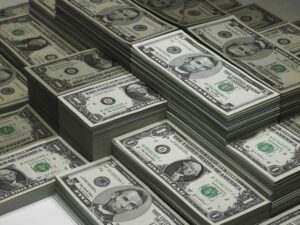Asian Currencies Stabilize Amid Dollar Strength and Risk Aversion
Most Asian currencies showed signs of stabilization on Thursday after recent losses, with the Japanese yen hovering near three-month lows. Meanwhile, the U.S. dollar remained strong, supported by expectations of slower interest rate cuts from the Federal Reserve.
Regional currencies faced pressure due to increased risk aversion, fueled by concerns over a tight U.S. presidential race and rising tensions in the Middle East. This cautious sentiment benefited safe-haven assets like the dollar and gold, although the yen failed to attract significant demand due to doubts about the Bank of Japan’s (BOJ) ability to continue raising interest rates.
Traders also kept a close eye on potential stimulus measures from China, which further added to the cautious tone in Asian currency markets.
Japanese Yen Remains Fragile Amid Intervention Warnings
The Japanese yen (USD/JPY) slipped slightly on Thursday, following a sharp drop in the previous session. Despite its decline, the yen found some support after Japanese officials warned against “one-sided” movements in the currency markets. This raised speculation about possible intervention to stabilize the yen.
However, the yen remained under pressure as weak Purchasing Managers Index (PMI) data indicated a contraction in Japan’s business activity in October. Doubts over the BOJ’s capacity to continue hiking rates, especially with Japanese general elections approaching, added to the currency’s vulnerability. The ruling Liberal Democratic Party may need to form a coalition to maintain power, potentially limiting the BOJ’s flexibility in monetary policy.
The Bank of Japan is expected to hold its interest rates steady at its upcoming meeting next week. Before that, all eyes will be on Tokyo’s consumer inflation data, due on Friday, as a key indicator for future monetary policy decisions.
U.S. Dollar Holds Firm Amid Rising Treasury Yields
The U.S. dollar index and dollar futures dipped slightly during Asian trading hours but remained close to their three-month highs. The dollar’s strength came from rising Treasury yields and growing expectations that the Federal Reserve will implement a smaller 25-basis-point rate cut in November, reflecting the ongoing resilience of the U.S. economy.
Later in the day, PMI data is anticipated to offer more insights into the U.S. economic outlook, which could further influence market expectations.
On the political front, increasing odds of Donald Trump’s success in the U.S. presidential race bolstered the dollar. Traders are betting that Trump’s policies could lead to higher inflation, which would keep the dollar strong.
Broader Asian Currencies See Modest Recovery
Elsewhere, most Asian currencies regained some ground on Thursday after recent losses. The Australian dollar (AUD/USD) rose 0.2%, buoyed by mixed PMI data, while the South Korean won (USD/KRW) remained flat after disappointing GDP figures showed minimal growth in the third quarter.
The Chinese yuan (USD/CNY) also firmed slightly, rising 0.2% after hitting a near two-month low earlier in the week. Other regional currencies, including the Singapore dollar (USD/SGD) and Indian rupee (USD/INR), saw minor movements as they steadied after recent declines.




















